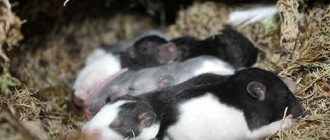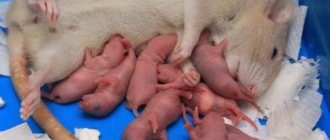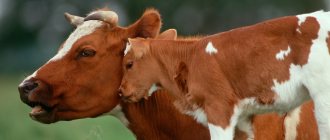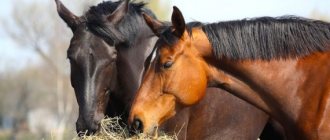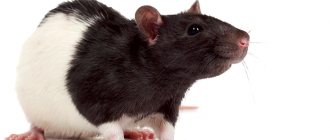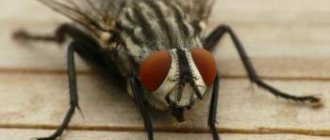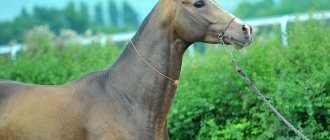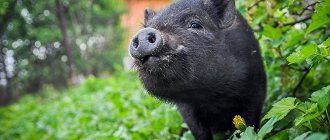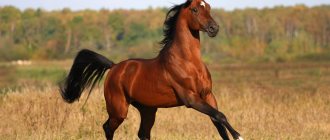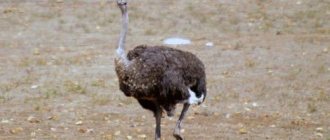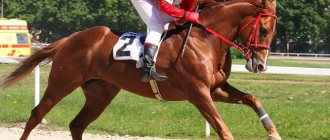Pregnancy (graviditas) – physiological state of the mare during the period of fruiting. Pregnancy in a mare begins from the moment of fertilization and ends with the birth of a mature foal. In practice, experts consider the day of the last (fertile) insemination to be the beginning of pregnancy. Pregnancy in a mare is usually singleton, but there are cases when two foals develop and are born during pregnancy.
According to their course, experts distinguish:
Pregnancy is physiological, characterized by the normal state of the body of the foal and mare.
Pregnancy is pathological when it is accompanied by disruption of physiological processes in the mare’s body and the developing fetus.
Mares hunting
At the age of one and a half years, mares become sexually mature and ready to conceive. But the first mating is usually allowed only at 3-4 years, when the body is fully formed and ready for gestation.
Hunting in mares is the time, state of the body and behavior during which the animals actively want to mate and allow horses to approach them. This period lasts from 2 to 14 days, most often a week, occurring, on average, every 20-21 days. Hunting time can be determined by a number of signs:
- frequent neighing;
- excretion of urine in small portions;
- often lifts tail, places hind limbs wide;
- slight swelling of the genitals and whitish discharge;
- loss of appetite.
When a stallion approaches and mounts, the horses do not fight back and show readiness to mate. At stud farms, specialists should monitor the appearance of heat in mares, and if not, contact a veterinarian. The specialist will determine the sexual cycle and the time suitable for mating.
Information: the best time for mating is considered to be March-April, but not later than mid-July. This will create favorable conditions for young animals.
Development of the embryo and fetus of the mare
At the age of 1 month, the body length of the embryo is 0.5-0.7 cm. The head does not have the outlines of a horse.
At 2 months, the length of the body is 5.5-7 cm, weight 62-70 g. The head becomes shaped and takes on the shape of a horse. The hoof configuration appears on the limbs.
At 3 months, the length of the body is 12-15 cm. Short ears are clearly visible. Nipples are visible on the mammary gland; the hooves are well defined. The deposition of salts in bone tissue begins.
At 4 months, the length of the body is 20-30 cm, weight 1300-1600 g. The external genitalia are being formed. Sometimes individual short hairs appear on the lips.
At 5 months, the body length is 30-37 cm, weight is 3-4.5 kg. There is thick hair on the lips (“mustache” and “beard”). Individual hairs appear on the skin of the eyebrow and on the tip of the tail. The external genitalia are well formed. The scrotum and preputial sac are poorly defined.
At 6 months, the body length is 40-75 cm, weight is 4-6 kg. There are thick hairs on the lips and well-defined eyebrows. There are individual hairs on the tail, eyelashes appear, individual hairs are noticeable on the neck (mane) and on the skin of the top of the auricle.
At 7 months, the length is 45-48cm, weight 4.5-7.5kg. The mane hair is well defined. The skin of the auricle is covered with hair.
At 8 months, length 50-90cm, weight 9-15kg. Hair appears all over the scalp. The ears, mane area and back are covered with thick hair. Individual hairs are visible along the sides of the spine. The tail is covered with hair.
At 9 months, length 60-115cm, weight 12-20kg. The entire skin of the body is covered with hair. The hair on the skin of the corolla is well defined. The tail is well covered with hair.
At 10 months, length 80-125cm, weight 18-30kg. The entire body is covered with short hair. Significant horn growth is found on the soles of the hooves.
At 11 months the fetus becomes mature. The length of the fetus is 1-1.5 m, weight 26-60 kg (1/14 -1/16 of the mare’s weight before birth). The entire surface of the body is covered with thick hair. The testes often descend into the scrotum. The incisors and canines protrude on the upper and lower jaws. Three primary premolars protrude from each side of the upper and lower jaws.
Determining whether a horse is pregnant
Pregnancy can be determined by eye only after 6 months. Such deadlines are not convenient for horse breeders. 2 weeks after conception, pregnancy can be confirmed by ultrasound diagnostic methods and laboratory methods, which cannot be called cheap.
Pregnancy can be detected by external signs - behavioral characteristics of the mare:
- decrease in activity and agility - the mare sleeps more;
- increase in appetite;
- When kept in a herd, he avoids others.
At home, owners determine conception by the lack of desire to mate, which appears regularly in non-foaling horses. In the later stages, pregnancy can be recognized by the recumbent position, which becomes the mare’s favorite, and by the enlargement of the udder. Veterinarians determine pregnancy by rectal and vaginal examination; upon palpation of the peritoneum, a lump is felt on the left side.
Occasional period
The queens reach sexual maturity by the age of one and a half years, but this period is not sufficient for coverage, because the animal has not yet fully formed physically. Therefore, there may simply not be enough strength to bear full-fledged offspring and care. The first mating is recommended when the horse reaches the age of three to four years.
recommended articles:
- Rules for feeding goats during pregnancy and after lambing
- Postpartum paresis in a goat
It is best to organize mating in March–April, maximum in mid-July. If the farm is located in an unfavorable climate, then it is recommended to move these deadlines forward by 14 days. This technique allows you to prevent colds in young animals.
Mating of horses
Definition of pregnancy
If we talk about visual signs, they appear only from the sixth month after successful coverage. To diagnose pregnancy early, you can use an ultrasound or take tests to a veterinary laboratory. It is worth noting that both of these methods are not the cheapest.
The first samples are taken a week or two after mating. Another way to determine the presence of a fetus is by palpation of the uterus and abdomen. If there is a compaction on the left side, then this is the sign that indicates the presence of a fetus.
A number of signs can also be used to judge whether a horse is pregnant:
- the animal sleeps more than usual;
- in the later stages, the mare prefers to spend a lot of time lying down;
- appetite increases;
- the queen does not come into heat;
- It is common for pregnant mares to protect their territorial possessions;
- when kept in a herd, the horse tries to stay separate from its relatives;
- A few days before foaling, you can notice an increase in the udder.
How is pregnancy progressing?
The entire pregnancy can be divided into periods, the duration of which is approximately 111 days:
- formation of the embryo and membranes;
- the embryo appears similar to a foal;
- active growth and weight gain of the fetus.
Excessive physical activity and stressful situations are contraindicated for pregnant mares. There should be no drafts in the stables, and the floors in the stalls are covered with a thick layer of bedding, which must be padded daily. In the summer, it is better to place mares indoors at night and not leave them on pastures.
On days 60–90 after favorable coverage, the uterus may experience something similar to estrus. In such circumstances, it is necessary to invite a veterinarian for an examination (before re-breeding).
Pregnant mare
Very cold water and expired feed lead to miscarriages, and therefore the nutrition of the pregnant mare must be carefully monitored. 90–120 days before the expected foaling date, the feeding rate increases by 40%. Feeding consisting of small portions several times a day is recommended. If possible, special mixtures for pregnant mares, which are rich in vitamins, are added to the feed. In the absence of such fertilizers, grass flour, carrots, and apples are suitable.
14 days before the due date, the mare must be completely removed from work. However, it is worth remembering that the animal must be provided with regular walks in levadas during this time (depending on weather conditions).
How long does pregnancy last in horses?
Mares remain pregnant for 341 days, which is approximately 11 months. If everything proceeds normally, then this is the time it takes to become pregnant. Depending on seasonality, development, fruit size and food supply, the period can be slightly increased or reduced to 14 days (both up and down).
How long does it take to bear a baby?
The average gestation period for a baby is 11 months (340 days). This time is enough for the full development of the fetus. In reality, the deadlines can be shifted and depend on a number of factors:
- the horse's health status;
- features of the course of pregnancy;
- multiple births;
- a first-time mare carries longer – up to 12 months;
- Pregnancy with a male foal lasts an average of 2 weeks longer.
Mares can go pregnant for 310-370 days, this is within physiological norms.
The importance of intimate hygiene during the period of lochia discharge
The composition of lochia is an ideal environment for the proliferation of pathogenic microflora. To protect herself from possible infection and inflammation, a woman should regularly change pads designed to absorb postpartum lochia. The use of tampons at this time is prohibited, since they do not create conditions for a uniform outflow of secretions and can lead to lochiometra.
When does lochia go away after childbirth?
It is necessary to carry out hygiene of the external genitalia after each visit to the toilet and changing sanitary pads. Intimate hygiene procedures should be performed using warm water, the temperature of which is about 30 ° C. In this case, the stream should be directed from the pubis to the anus, and not vice versa, as this can lead to the transfer of anal microflora into the vagina.
It is important to ensure that the stream of water does not penetrate the vagina, because it can upset the balance of vaginal microflora. washing gel "Ginocomfort"
extracts and oils, lactic acid, panthenol, bisabolol and sodium lactate provide delicate cleansing of the intimate area. The product has an anti-inflammatory, soothing and antibacterial effect and is suitable for caring for the sensitive vaginal mucosa. The gel is approved for use in the postpartum period and is well tolerated without causing discomfort or discomfort. This product has all the necessary quality certificates.
How to care for a pregnant mare
Timely detection of pregnancy makes it possible to adjust the diet, exercise and care of the horse, which will help the fetus develop and prepare the animal for childbirth. Necessary care elements:
- Feeding. The first months the fetus grows slowly, the diet is increased by 40% by the end of the period (last 3 months). Portions are reduced, fed in fractions (5-6 times) to reduce the load on the gastrointestinal tract. Only high-quality feed is used - without signs of rot or staleness. Avoid foods that cause fermentation. Include vitamin supplements, fresh apples, carrots.
- Water is only warm; cold water can cause miscarriages and colds.
- Works. The loads are gradually reduced, although the mare can perform light work almost until giving birth (released 3 weeks before the expected due date).
- Walking. Mares need daily walking to prevent swelling of the limbs and abdomen. At the end of pregnancy, the horse wants to lie down, which leads to stagnation of fluid and difficult birth. You need to walk your mare regularly, except in bad weather. Ice is especially dangerous.
- Content. The stall needs to be ventilated, provide ventilation, warmth and comfort. The bedding is changed regularly. When kept as a pasture, they are taken to the stable at night.
- Care. Rough handling and heavy work are excluded. Screaming, disturbing the horse's calm, or using a whip is prohibited.
In the second or third month, the mare may go into heat. You need to monitor the animal and avoid contact with the stallion, which could cause a miscarriage.
Preparing for horse birth
Giving birth to a horse is a crucial moment. It is important to carry out regular deep cleaning of the stall. Accordingly, at a period of 10-11 months it is necessary to clean the place where the birth will take place. A new and warm bedding should be laid on the floor, the light should be adjusted: it should not hurt the eyes, but at the same time it should be enough for the comfort of the person controlling the process. Providing a calm environment is essential for both the veterinarian and any individual. But most of all, this is important for the horse itself, so that its offspring are healthy and the birth process goes without complications.
It is recommended to tie the mare's tail with a clean cloth, which can be pre-treated with an antiseptic for complete sterility.
Before giving birth, it is important to slightly adjust your diet. When the baby does not appear on time, it is better not to overfeed the female; you need to give her light food, and also monitor the availability of clean drinking water. At the same time, you need to feed the female with food rich in minerals and vitamins.
What you need to prepare before giving birth
A special stall where the mare will be foaled is prepared in advance. It is better to choose a quiet place, away from other horses. The room is cleaned, objects that could cause injury are taken out. Walls and floors are disinfected. Pour clean straw. If other horses are standing nearby, the lattice partitions are covered.
In most cases, during a normal birth process, the mare will cope on her own, without any need for help. The vanity and care of a person will only hinder her.
Organization of necessary conditions
In order for the mare to give birth safely, care should be taken to ensure that she is in a warm room without drafts. Also, at the time of resolution of pregnancy, no strangers or animals should be near the horse. Lighting should be moderate (not too bright). It is advisable to cover the floor with dry straw bedding at room temperature.
Pre-disinfect the walls, floors and feeders with drinkers. For these purposes, a solution of iodine or potassium permanganate can be used. There should be a coarse cloth on the floor under the straw, which will absorb birth secretions.
The end of pregnancy is usually known a day or two before it happens, by the swollen mammary glands of the mare. Childbirth can take place not in a stable, but in “field conditions”. There is no need to worry too much in such a situation: for a horse such an environment is natural, so it will be able to take care of both itself and the newborn.
Before the foal begins to be born, be sure to tie the mare's tail (this will make labor easier). To do this, fold it in half and wrap it with a bandage.
Preparing the premises
Labor in horses begins late at night or early in the morning and usually lasts about half an hour if it occurs without complications.
Start preparing for foaling several hours before the expected time. Clean the foal horse's stall, disinfect it and cover it with fresh deep bedding; dim the lights in the stall. It is also recommended to cover the bedding with clean natural fabric.
Shortly before giving birth, the horse begins to turn around on its croup, worry, lie on its side and sweat profusely. At this point, you need to clear the stall of strangers and not disturb the mare in the future. Important! A horse before foaling can behave calmly. In this case, a sure sign of impending labor will be a large amount of mucus on her labia and frequent attempts to rub her tail against the walls of the stall.
Signs of an approaching foal
The fact that labor will soon begin can be understood by a number of signs:
- Behavior change. Anxiety, fussiness - a foaling horse gets up, lies down again, looks at the tail.
- Genital organs. Swelling of the labia, thinner discharge. Lubricant liquefaction occurs 1-2 days before foaling.
- Swelling of the udder, sometimes the appearance of colostrum.
- Some mares experience excessive sweating.
The mare’s pelvis turns into a “birthing” one, the ligaments weaken, their structure becomes loose and more pliable. Changes start 12-36 hours before foaling.
Changes that occur in the mare's body during pregnancy
In pregnant mares, as the fetus develops, intraperitoneal pressure increases, which in turn causes increased frequency of defecation and urination, and breathing becomes increasingly thoracic and rapid. Kidney activity increases. In the second half of pregnancy, protein is often found in the urine. An increased load on the cardiovascular system causes hypertrophy of the heart muscle, mainly the left ventricle (pregnant hypertrophy); the functional state of the myocardium and vascular tone increases. As a result of the development of placental blood circulation, the vessels of the uterus grow, their diameter increases by 4-5 times. The amount of blood increases by 20-25%, but its morphological composition remains almost unchanged. Young forms of red blood cells appear in the blood. Fluctuations in hemoglobin levels in the blood remain within normal limits. There is an increase in blood clotting. The erythrocyte sedimentation reaction accelerates. The amount of calcium and phosphorus in the blood decreases, potassium increases. Physiological “acidosis of pregnancy” is observed. The amount of total protein and the viscosity of the blood serum are slightly reduced. The content of calcium, phosphorus (calcium-phosphorus ratio), carotene, alkaline blood reserve varies depending on the season of the year and the composition of the diet.
There is a strong change in metabolism. Initially, as a result of increased appetite and digestibility of feed, fatness improves; by the end of pregnancy, mares lose weight, and if fed and maintained improperly, they may become emaciated.
Mares often experience a disturbance in mineral metabolism. If there is no mineral supplement in the diet, the mare’s bone tissue is depleted of calcium salts, which predisposes to bone fractures. Disruption of mineral metabolism greatly affects the condition of the teeth. Water metabolism is closely related to mineral metabolism. Studies have shown that during pregnancy, tissues in mares retain water, become more juicy, and are prone to swelling. Pregnancy in a mare is accompanied by the accumulation of nitrogenous substances in the body. The urine contains less urea, the amount of ammonia and other products of incomplete combustion of proteins increases. The absorption of feed carbohydrates is improved. Glycogen accumulates in the liver. Changes in fat metabolism are expressed in an increase in the amount of neutral fats, lipoids and cholesterol in the blood. As pregnancy progresses, significant amounts of hormones (placental) are formed and accumulated in the body. Pregnant mares produce melanogormon, which causes pigmentation of the placentas and the appearance of “pregnancy spots” visible on non-pigmented skin, especially in the mammary gland area.
Childbirth process
It is better not to disturb the mare during childbirth - the process consists of pushing, during which the fetus moves along the birth canal. When exerting effort, the horse becomes covered in sweat and often rolls over. Mares give birth in a lying position, less often standing. During the normal course of foaling, the forelimbs and the adjacent head of the foal appear first. If this happens, the further process will proceed normally. A veterinarian's help may be required if there are two fetuses or the baby's hind legs appear first.
The amniotic sac often ruptures on its own; if necessary, it is cut. After giving birth, the horse usually stands up and the umbilical cord breaks naturally. If there is no rupture, the tourniquet is cut with sterile scissors. The foal's umbilical cord is treated with iodine.
Childbirth usually lasts 30-40 minutes; when twins are born, the second appears at an interval of 20 minutes. The foals are weakened, often aggressive, they are separated, and the necessary assistance is provided. The mare sometimes recognizes and feeds only one baby.
See also
Descriptions of types of saddles for horses, their pros and cons and how to chooseRead
Reference: the foal's weight is 30-40 kilograms - this is 10-15% of the mother's weight. Larger horses (draft horses) give birth to larger babies.
Helping a mare to give birth normally
The onset of labor can be determined by the behavioral characteristics of the mare. If she stops eating, behaves anxiously and nervously, sweats and strains, it means that she will soon bear offspring. The mare's udder swells, drops of milk appear from the nipples, swelling appears on the labia, and the depression between the beginning of the tail and the ischial tuberosity expands.
Position of the foal before birth
If an animal is among a herd, it tries to leave it, and if in a separate room, on the contrary, it strives to join society. All this is a signal to action - it’s time to prepare for childbirth.
Preparation for the process
Do not panic during childbirth - all your movements should be calm and calculated. It is best to prepare the room in advance for the appearance of offspring. If you are not experienced enough to give birth, contact your veterinarian. By watching him work, next time you will be able to control the process yourself.
Step 1. Clean the room where the birth will take place in advance. Disinfect equipment with iodine solution. Remember: the pen must be kept dry and warm.
Preparing the room for horse birth
Step 2. Make sure that nothing is interfering with the birth process. Remove unnecessary items and provide your pet with privacy.
There should be no unnecessary items in the room
Step 3. Place dry and clean straw on the floor. If the weather outside is cold, take care of the bedding in advance. Place a clean, coarse cloth under the woman in labor so as not to stain the floor.
Place straw on the floor
Step 4. Dim the lights. If the lighting is bright, it will irritate and disturb the animal.
Bright lighting will irritate the animal
Step 5. Tie the female's tail by carefully folding it and tying it with a bandage. Experienced horse breeders recommend doing this to facilitate childbirth.
Horse's tail tied before pregnancy
How to deliver a horse?
When a mare gives birth, she lies on her side and makes strong efforts, pushing the calf towards the exit. The mare may flick her tail violently, move around the floor, sweat, and jerk her hind legs. Some mares give birth to a foal while standing, then they often change position and become very restless. When the animal pushes the baby up to the chest, the process goes much faster and easier.
Step 1. If the cub is in the correct position (belly down, muzzle and front hooves towards the exit), do nothing, just watch the process
If the mare kicks violently, hold her legs, but do this carefully so as not to frighten the animal
Start of labor
Step 2. The baby appears in a blue-whitish amniotic sac, which ruptures on its own. If the bubble hangs from the birth opening and you can feel the fetal limbs in it, help rupture the membrane, then free the foal's nostrils from mucus.
Amniotic sac of a giving birth mare
Step 3: After about six minutes, the new mother will stand up, breaking the umbilical cord (or it will break if the baby falls from a standing horse). If this does not happen or the umbilical cord breaks further than ten centimeters from the belly, tie it with strong threads (two to three centimeters from the abdomen), cut it with pre-disinfected scissors and treat it with a 5% iodine solution.
The birth of a foal
Postpartum care
Immediately after giving birth, the horse carefully licks its baby and remembers its smell. Licking acts as a strengthening massage and serves to boost the foal’s immunity.
For mom
Bedding soiled during childbirth should be removed from the stall and replaced with fresh straw. The afterbirth comes out within an hour, you need to make sure that it comes out completely by spreading it out and checking for integrity. Otherwise, the remains of the placenta in the uterus will lead to the development of inflammation. The horse often eats the afterbirth; you should not disturb it - it contains many valuable substances. When the mare is dry from sweat (it is important to ensure that there are no drafts), she is given warm water and fed with high-quality hay.
If the birth took place without pathologies, the horse does not need special care. The litter is changed every day, as bleeding continues for 7-8 days. Monitor the condition of the udder.
After 2-3 weeks, the mare’s body recovers, and she begins to estrus again. The owner decides when to carry out the next mating. It is believed that you need to give the horse a rest for 1-3 months before another pregnancy.
Behind the foal
The mother sniffs and licks the baby, barely catching her breath. If the woman in labor is too tired, the foal needs to be dried. Veterinarians usually check for breath. In the first hour, the foal is already on its feet; the condition of the limbs should be monitored. The baby quickly begins to look for the udder (after 1-2 hours). If the foal does not try to suckle, the horse's milk is expressed and watered from a bottle. Meconium comes out in the first 2-3 hours. If there is no stool, the baby is given castor oil. For 5-6 months, the foal must be with its mother in order to eat on time and fully develop. In the first months, the baby sucks the udder up to 40 times a day.
How is the postpartum period going?
For the first six months of the year, the horse and foal should always be together. Babies eat more than 50 times a day. So they also do all their walks and physical activities without being separated. But after 6 months it is worth starting to wean the foal from the constant presence of its mother.
The first six months of the year should also be given special care to the mare. The udder of a nursing horse requires special hygiene. The mare still needs to be kept warm, preventing her from getting too cold or, conversely, overheating. Otherwise, the milk produced will spoil.
Possible problems
Complications can occur during childbirth and after foaling:
- the fetus is walking with its hind legs - urgent veterinary assistance is required;
- labor is weak, the fetus does not move every 10 minutes;
- the placenta does not come off - manual extraction may be required;
- the foal is not breathing, the heart is not beating - the baby will need resuscitation, cardiac massage;
- ruptures, red color of the bubble - the foal needs resuscitation measures;
- infection can be assumed by the yellow or green color of the bubble, the unnatural color of the baby - treatment of the mother and foal will be required;
- meconium does not pass - help is needed to empty the intestines;
- the baby cannot stand up - congenital pathologies of the limbs.
A mare in labor should not be disturbed; sometimes grooms and other staff become overly interested in the process, distracting and frightening the woman in labor. The veterinarian should help only if problems arise - labor slows down, the fetus is not delivered correctly.
In most cases, horses cope well with foaling on their own and bring the baby themselves. During pregnancy, you need to feed the mare well, not put her to heavy work, and monitor stress or training. Then by the time of birth the horse will be healthy and strong, her instincts will tell her the right actions, and she will give birth to a healthy foal.
About some emergency situations
Unfortunately, foaling may not always be successful and safe for the horse. It happens that a mare aborts her calf. Most often, the reasons for this lie in the carelessness and inattention of the owner to his pet. If this does happen, all the bedding in the stall should be carefully collected, taken out of the stable and burned, and the stall itself should be disinfected. The horse must be thoroughly examined, for which a veterinarian must be invited, and the aborted fetus must be burned after visiting the veterinarian. It should, however, be said that abortions of horses kept on a private farmstead are quite rare. Usually everything goes well.
Another emergency situation for a horse owner (although quite normal for the animal itself) can be giving birth in a pasture. There is nothing wrong with this; almost always these births end very well. Even the firstborn, obeying genetic instinct, will do everything right and bring the foal into the stall to the delight of all household members.
Finally, signs that you should definitely pay attention to during childbirth are:
- an overly drawn-out process.
- one leg protruding from the birth canal, two legs without a head, or any other abnormal position of the fetus.
- failure of the foal to advance within every 10 minutes.
- disturbances during the passage of the placenta.
- ruptures of the birth canal.
- congestion after birth, convulsions, inflammation of the udder, fever and lethargy of the horse the day after birth.
In all these cases, it is imperative to contact a veterinarian.
Here is a short list of the most common signs that your ferret is not feeling well:
- changes in behavior that are not characteristic of the character (any deviation of behavior from the norm, be it lethargy, apathy, decreased mobility, or, conversely, excessive nervousness, anxiety, is a reason for close monitoring of the animal’s condition and, at the slightest suspicion of ill health, a reason for a visit to the doctor) ;
- complete lack of mobility (if the animal lies motionless with its eyes closed - an alarming sign indicating a very serious condition of the animal);
- rapid, difficult breathing or, conversely, breathing that is sharply slow and shallow;
- limited mobility (impaired ability to support the front or hind limbs);
- lameness (intermittent or absolute lameness in one of the limbs);
- slow growth and development of young animals;
- alopecia (hairless areas of skin), redness, peeling, thickening and hardening of skin areas;
- wounds, abrasions, scratches, scratches, crusts, etc. on the surface of the skin;
- excessive hair loss;
- tousled, dry, dull or matted coat;
- gradual thinning of the coat, most often starting from the tail and back (signs of the possible development of hyperadrenocorticism - disease of the adrenal glands);
- changes in body contour (eg, bloating);
- the formation of skin and subcutaneous compactions, swellings (especially the appearance of swelling at the tip of the ferret’s tail - a sign of the formation of a rather aggressive tumor - chordoma);
- itching, restlessness, scratching;
- itching, restlessness in the area of the ears (a very common disease in ferrets is otodectosis - ear scabies);
- discharge of various types (mucous, bloody, purulent, etc.) from the nose, eyes;
- sneezing, coughing, difficulty breathing;
- excessive drooling, difficulty eating and chewing food (signs of tartar formation, the presence of a foreign body in the mouth, or low blood sugar due to insulinoma);
- gradual or sudden weight loss;
- decreased or lack of appetite (an extremely dangerous sign, since due to intense metabolism, even a short-term lack of appetite can lead to irreversible consequences);
- vomit;
- decreased or, conversely, increased thirst;
- difficulty urinating in small portions or its complete absence;
- change in the color or character of urine;
- small, infrequent, dry stools or its absence (especially in combination with signs such as vomiting and lack of appetite may indicate that the ferret has eaten a foreign body);
- loose stools, change in stool color, stools mixed with blood, mucus, etc.;
- increased fatigue, loss of consciousness (often a sign of cardiac pathology or weakness due to low blood sugar with insulinoma);
- convulsions and paralysis.
In addition to self-examinations, it is recommended to conduct regular preventive examinations with a veterinarian. For timely prevention and detection of a number of diseases, it is recommended to visit a veterinarian at least once a year. These examinations can be combined with vaccination.
Deadlines
The duration of maternity leave directly depends on how the woman experienced the period of bearing a child and how the birth itself went. Now in Russia there is a scheme that you can rely on and understand how many days of rest a pregnant employee is entitled to:
• 140 calendar days - a woman goes on vacation 70 days before the day of birth and rests for another 70 days after the birth of the child. Issued to those who have given birth to one child and whose pregnancy proceeded normally; • 156 calendar days - the essence here is simple, because 16 additional days are added to the 140 allotted days. Such leave is granted to those who have one child in the family, but the birth was accompanied by complications. Issued 70 days before birth; • 194 calendar days - such a long leave is given to those who are expecting the birth of more than one child. Issued to women who feel normal during pregnancy. They can go on vacation 84 days before the birth of their children. It is also worth noting that the same long leave is granted to those who only learned about a multiple pregnancy during childbirth. After the birth of a baby, a woman is given sick leave for 54 days, which is added to the required 140 days; • 156 calendar days - allocated to those women whose pregnancy ended between 22 and 30 weeks. This leave is issued from the moment of premature birth; • 70 calendar days - due to those who adopted a child under three months old. Employees can go on this leave from the day of adoption; • 110 calendar days - issued to employees who have adopted more than one child under three months.
Pregnant women who live or work in places with increased radiation contamination can be placed in a separate category. In such cases, leave is issued 90 days before the expected birth, and its duration depends entirely on the condition of the expectant mother. Thus, women whose pregnancy proceeded normally can count on 160 calendar days, 176 days are allocated for those who experienced complications during childbirth, 200 days of leave are given to those whose family has two or more children.
It is worth noting that it is the complexity of childbirth and the number of children that regulate the number of vacation days. If the pregnancy was multiple, then the process of giving birth to children will be considered difficult in advance. The law provides for these nuances to ensure the optimal number of rest days for new mothers.
We have also explored other options for the development of events. Let’s say a woman refused maternity leave, but later decided to take it. In this case, the sick leave certificate will not include the full time period of leave due to the expectant mother, but will include dates taking into account the missed time. Thus, the period of leave before childbirth may be slightly reduced.
It also happens that sick leave certificates are not issued to pregnant women due to the fault of doctors. The reasons may be different, but one thing is worth noting - the duration of validity of such a disability document is not reduced.
Care and feeding of the foal from the first days of birth
In the first few days after birth, the foal and its mother should be placed in a semi-dark room so that bright light does not irritate the baby’s eyes. Around the fourth day, the foal and mare can already be released into the yard. To begin with, walking should be done in cloudy weather so that the sun does not spoil the foal’s vision. The raising of young animals must be done from the first days of its life. The first step is to teach the foal to trust people and not be afraid of them. To do this, you can scratch the baby, stroke him or caress him. Foals really like such caresses.
Did you know? Horses have fairly well-developed vision - thanks to the special structure of their eyes, these animals are able to distinguish all colors except red and blue.
In addition, horses have the ability to see in the dark, easily navigating in space even without light.
And the viewing radius of horses is 360 degrees, so the animal always controls the situation around itself. Under no circumstances should you allow yourself to be rude to your baby; It is also necessary to ensure that other people do not offend the newborn. Cruelty will greatly affect the character of a maturing horse, not for the better. Also, you cannot hold the foal by parts of the body: tail, ears, nose, etc. - this way you can hurt him. It is better to immediately accustom the animal to a halter, which is put on the foal from the first days. An important factor for the baby’s health is hygiene, especially when it comes to hooves. The fact is that a newborn foal’s hoof is completely empty underneath.
All kinds of dirt, manure and similar debris get clogged into these very voids. All this goes deep and hardens, which leads to inflammation and lameness. To prevent these problems, hooves must be cleaned daily. As for nutrition, there is nothing better for a baby in the first month than mother’s milk. It is from this that the foal receives all the necessary microelements. The owner of a new family needs to ensure that the baby eats all the colostrum, which helps strengthen the immune system and produce meconium (original feces).
A month and a half after birth, the animal can already be accustomed to regular food. For the first feeding, it is better to use oats ground to flour. If you don't want to grind it, you can cook it until soft. Starting from the age of two months, you can begin to prepare nutritional mixtures for the animal using oats, bran and legumes. The daily volume of such food should begin with 0.5 kilograms, gradually increasing the dose to 4 kg at six months of age. In addition to such tender foods, you need to start accustoming your baby to rough food, such as hay.
You can also start giving it as early as two months, and you should also add carrots to your diet. The baby himself will find vitamin food for himself by nibbling grass with his mother. But in the cold season it is necessary to add nutrients to his diet. It is worth noting that the age of up to one year is the most important in a horse’s life. It was at this time that the foundation for her entire future life was laid. Therefore, a growing body needs to be given monocalcium phosphate, as well as various premixes, which must be fed strictly according to the instructions that come with them.
